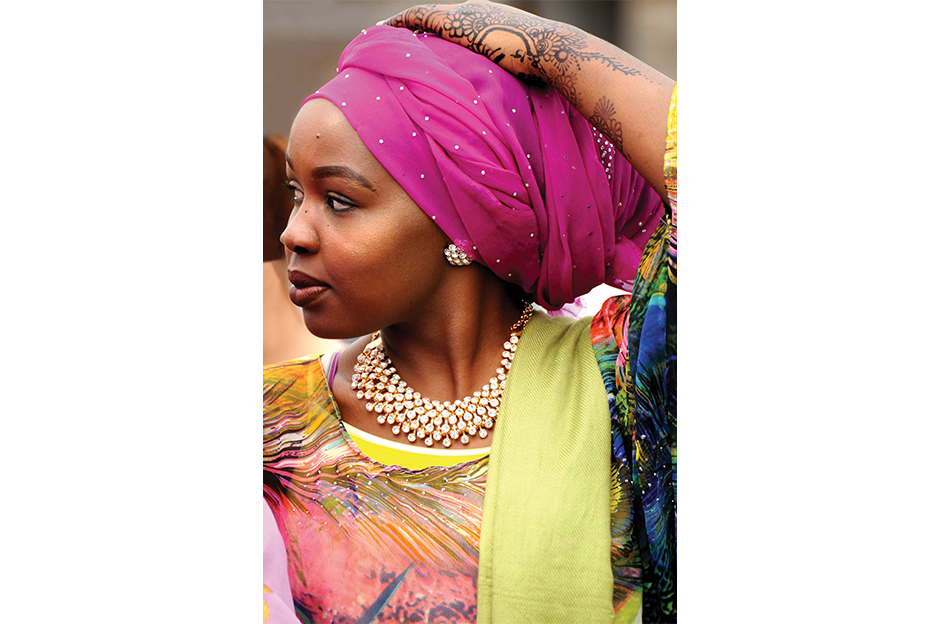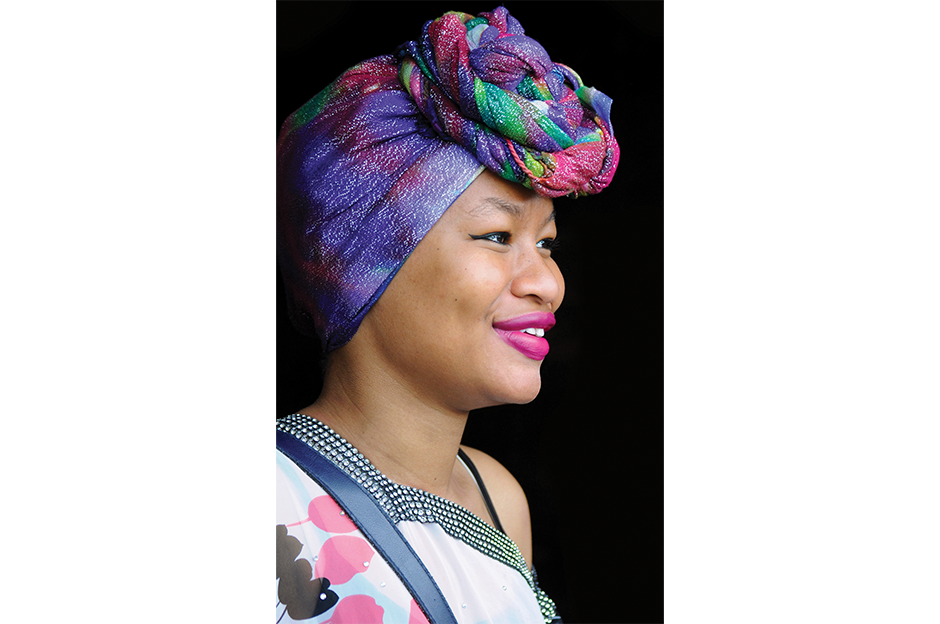Global Splendor highlights traditional and ceremonial dress from some of the many cultures present in Utica. Historically, the city attracted immigrants from Ireland, Wales, Lebanon, Italy, Poland, and, more recently, from the Dominican Republic and other Caribbean countries. Refugees fleeing war-torn countries began resettling here in 1978 and their numbers now exceed 16,000 with the most recent arrivals from Sudan, Burma, Nepal, and Somalia.
Ceremonial dress places people in space, time, social status, and context. Anthropologists rely on a culture’s textiles, jewelry, and other evidence of bodily adornment because they tell us stories about the group’s tools, availability of materials, skills, and contact with others. A desire to affiliate with or reject other groups is also evident in seemingly simple decisions about dress and the patterns, colors, and motifs lovingly created within them. Clothing reveals cultural norms related to gender, marital status, and how much of our bodies may be shown in public, as well as how clothing can make public spaces feel more private, for example with the use of headscarves. Temporal considerations such as the change of seasons, life cycles, and even the time of day are signified in dress as well, responding to cultural concepts of appropriate roles and public behavior.
Through our relationships with the Midtown Utica Community Center, native dress from a variety of countries has been collected and information about the context and creation of the clothing compiled. Global Splendor showcases the beauty, creativity, and deeper meanings of attire from around the world that is now part of Mohawk Valley’s cultural fabric.
The exhibition was organized by Dr. Kathryn Stam, Professor of Anthropology at SUNY Polytechnic Institute, and Chris Sunderlin, Executive Director of Midtown Utica Community Center, working with the community members at the Midtown Utica Community Center.






